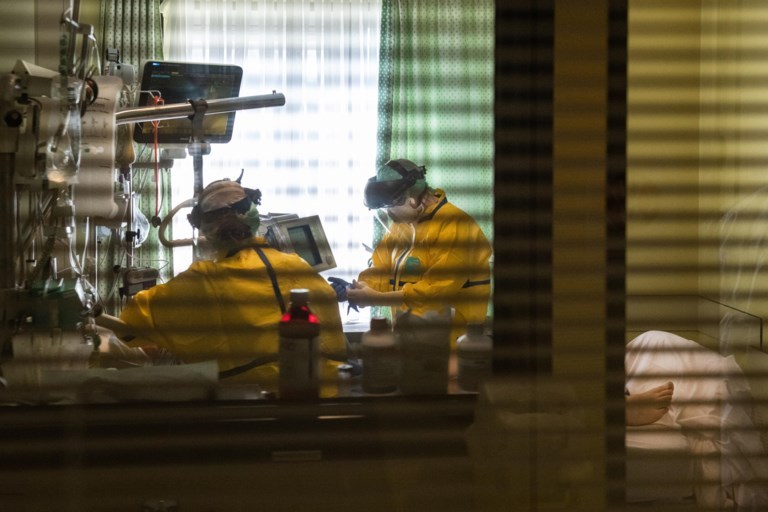Almost one in four of all patients suffering from the coronavirus infection (Covid-19) and taken into intensive care (ICU) died in hospital, according to an informal survey carried out by De Standaard.
The newspaper called nine Flemish hospitals, including the hospital of the Free University of Brussels, (VUB), to find out the rate of fatalities among ICU patients. The intention was to compare Belgium’s figures against a report that in China, 97% of ICU patients did nor survive, and half of all ICU patients in the United Kingdom.
From the responses – which are admittedly partial – it appears that 23% of ICU patients died, compared to only 11% of those admitted to hospital but not to ICU.
The ratio changes when the patient had to be placed on a respirator, when the fatality rate rose to 28%. Of patients in ICU but not on a respirator, the rate fell to 19%.
The figures, grave as they may be, are still lower than expected.
“We had estimated that only half of all patients would survive on intensive care. We ordered an extra refrigerated container, because we thought that the morgues would no longer be able to handle it,” said Hans Rigauts, general manager of AZ Sint-Jan Brugge-Oostende. “That was absolutely not necessary.”
Belgian physicians, like the world, had been following developments in Italy.
“We were also afraid of an Italian situation,” said Lieven Wostyn, chief physician of AZ Delta in Roeselare. “We bought respirators and invested heavily. I was very pessimistic, but we ended up doing much better than expected.”
A major difference between the chances of survival of one patient compared to another lies in intubation – where a breathing tube is inserted so that the patient’s breathing can be controlled by a machine.
Those patients who have to be intubated are those already in a more perilous state, and their chances of surviving are lower than those who are not, whether in ICU or not. They also spend more time in the ICU – roughly twice as long as patients who are not intubated.
21% of intubated patients are still in ICU, compared to only 3% of those admitted to ICU but not intubated.
“In the first week we had a very low threshold for intubation,” said Stoffel Lamote, anesthetist-intensivist at AZ Groeninge in Kortrijk. “But that quickly led to saturation. By investing a maximum in other methods, intubation could often be avoided, and we succeeded in limiting the length of stay on intensive care.”
Meanwhile, the rest of the country was on lockdown, introducing the population to the concept of flattening the curve – slowing the rate of infection so as not to overwhelm medical services.
And that appears to have worked, De Standaard found. The hospitals themselves report they were never stretched to breaking point.
“In Belgium there is a high level of intensive care. An explanation for this is that anyone who wants to charge the corresponding fee must follow a course," said Henk Vanoverschelde, head of anesthesia at AZ Maria Middelares Ghent. “It is very important to note that we were never stretched to the limit. It is not because you put people on a ventilator that they also receive good intensive care.”
The hospitals feel ready now to cope with the second wave of Covid-19 expected later in the year.
There’s been a learning curve,” said Dirk Ramaekers, director of medicine in the Jessa Hospital in Hasselt. “For example we never realised before than patients would often get blood clots, with all the problems that causes.”
The second wave, as a result of the lessons of the first, should see a lower rate of mortality. “Although that does depend on how serious the peak is.”
Alan Hope
The Brussels Times

